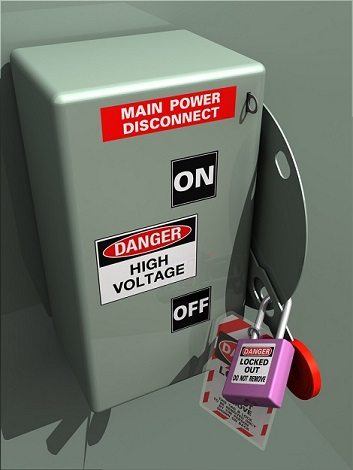
Only once businesses fully understand the challenges they face in thoroughly following the U.S. Occupation Safety and Health Administration’s Control of Hazardous Energy Regulations can they implement solutions. Many companies face the Lockout/Tagout laws thinking their largest challenge will be purchasing and applying the proper lockout equipment. But, in reality, this is only one of many major concerns.
As discussed in Part 1, many companies fail to create and write down a comprehensive energy control plan. Then, even if businesses have energy control strategies, they often provide insufficient employee training and monitoring to see it through. All of these issues lead to OSHA fines.
Businesses can address challenges with these Lockout/Tagout solutions:
Review and Update the Current Energy Control Plan
Few companies will have no energy control plan, but many will not have solidified and formalized it. Businesses should assign stakeholders, including executives and managers who will be responsible for reviewing and updating the energy policies in accordance with OSHA’s Lockout/Tagout laws.
The main goal of this stakeholder group should be to create a fully-customized Lockout/Tagout program — one that address the company’s specific needs and risks.
Focus on Equipment-Based Procedures
The assigned stakeholders need to create a formal, written document that includes equipment-specific lockout procedures. Some businesses provide lockout plans that don’t take into account the specific characteristics and dangers of many machines. The reason being that it’s time-consuming to create policies for hundreds or even thousands of different machines. However, the time must be spent to create a comprehensive plan that will genuinely improve worker safety and avoid OSHA fines.
The written lockout plan should include the steps to properly shutdown each machine and how to place or remove the proper Lockout/Tagout device. These steps should include illustrations in addition to written instructions so that the plan is 100 percent clear.
Include a Monitoring Plan Within the Lockout/Tagout document
As companies are updating their energy control plans, they should also establish how the process will be monitored. A formal plan can be ineffective if managers and employees don’t follow it.
One way to monitor the new energy-control strategy is to use a third-party auditor. This is sometimes the best way to ensure the plan is being followed throughout all levels of the business.
Include All Employees in the Plan
To ensure a new energy-control strategy is fully implemented and followed, companies have to provide the information to all relevant employees through training sessions and posting the instructions. Formal employee training is one way to make sure every worker receives an overview of the entire strategy, while posting the instructions in work areas and directly on machines enables workers to quickly learn the procedures for their specific workflow and machines. Instructions posted directly in work areas and on machines should have equipment-specific images as well, to avoid confusion.
Businesses can also publish the energy control program in the employee handbook or online so that workers always have access to it.